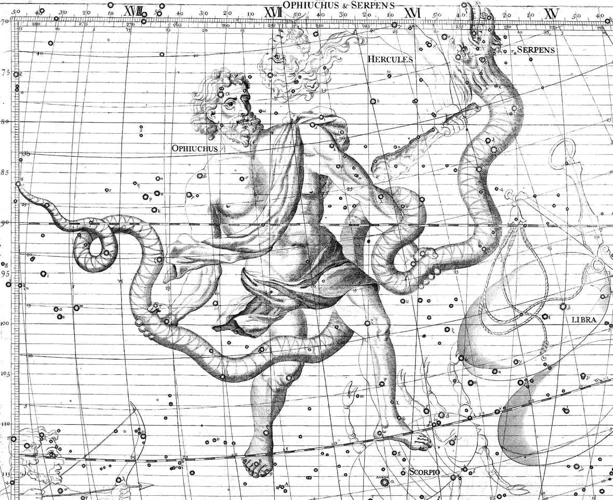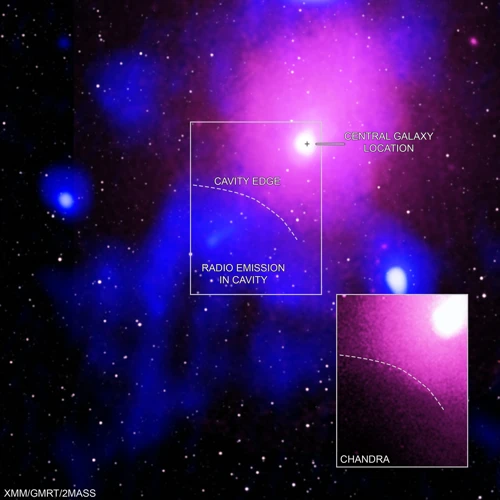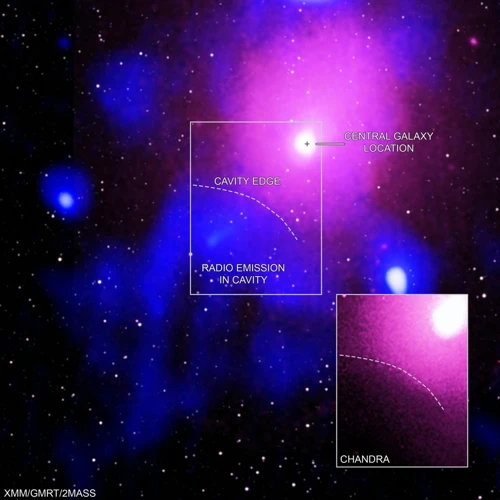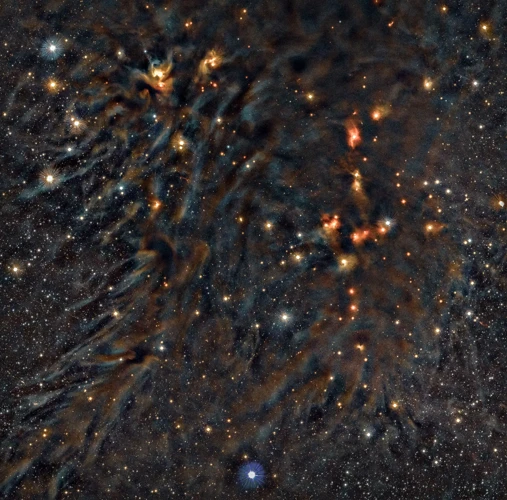The universe is filled with countless wonders, and one of its most enigmatic and intriguing constellations is Ophiuchus. This celestial serpent bearer has captivated the minds and imaginations of astronomers and stargazers for centuries, with its rich mythology, unique position in the night sky, and a wealth of discoveries waiting to be unraveled. Delve into the secrets of Ophiuchus as we explore its fascinating history, notable observations, and recent breakthroughs that continue to push the boundaries of our understanding. Prepare to be amazed by the mysteries and unanswered questions that surround this enigmatic constellation, and join us on a journey into the depths of Ophiuchus in astronomy.
Contents
- Ophiuchus: The Serpent Bearer
- Historical Observations
- Modern Discoveries
- Recent Observations and Breakthroughs
- Mysteries and Unanswered Questions
- Conclusion
-
Frequently Asked Questions
- 1. Can Ophiuchus be seen with the naked eye?
- 2. Is Ophiuchus part of the traditional zodiac?
- 3. What is the mythological significance of Ophiuchus?
- 4. Are there any notable stars in Ophiuchus?
- 5. Are there any deep-sky objects in Ophiuchus?
- 6. Can Ophiuchus impact astrological forecasts?
- 7. Are there any exoplanets discovered in Ophiuchus?
- 8. What is the origin of the snake symbolism in Ophiuchus?
- 9. Could Ophiuchus be part of a larger supercluster?
- 10. How has space telescopes contributed to our exploration of Ophiuchus?
- References
-
Frequently Asked Questions
- 1. What is the significance of Ophiuchus in astronomy?
- 2. Is Ophiuchus part of the traditional Zodiac?
- 3. What are some notable celestial objects found in Ophiuchus?
- 4. How has Ophiuchus contributed to exoplanet research?
- 5. Are there any unanswered questions regarding Ophiuchus?
- 6. How have space telescopes aided in exploring Ophiuchus?
- 7. Who were some notable astronomers that contributed to the study of Ophiuchus?
- 8. What are the characteristics of stars in Ophiuchus?
- 9. What are the origins of the mythology behind Ophiuchus?
- 10. What are some recent breakthroughs in Ophiuchus observations?
- References
- Read More
Ophiuchus: The Serpent Bearer

Ophiuchus, also known as the Serpent Bearer, is a constellation that has fascinated astronomers and sky watchers for centuries. In Greek mythology, Ophiuchus is associated with the story of Asclepius, a skilled healer who was known for his ability to resurrect the dead. The constellation is often depicted as a man holding a giant serpent. Its position in the night sky is located between the constellations of Aquila and Serpens. Despite not being part of the traditional zodiac, Ophiuchus has gained attention in recent years due to its potential impact on astrological forecasting. Some believe that individuals born under Ophiuchus may possess distinct personality traits related to healing, wisdom, and transformation. While controversial, this notion has sparked a growing interest in understanding the role of Ophiuchus in astrology. Whether you view Ophiuchus as a celestial phenomenon or an astrological aspect, its symbolism as the Serpent Bearer continues to captivate our curiosity and imagination.
The Mythology behind Ophiuchus
The mythology surrounding Ophiuchus is rooted in ancient Greek tales. According to one legend, Ophiuchus represents the figure of Asclepius, the son of Apollo and a skilled healer. Asclepius was known for his ability to heal the sick and even bring the dead back to life. This exceptional skill earned him the envy of the gods, particularly Hades, the ruler of the underworld. Asclepius’ resurrection of the dead threatened the balance between the mortal realm and the realm of the gods, leading Zeus to strike him down with a lightning bolt. To honor his exceptional healing abilities, Zeus immortalized Asclepius by placing him in the night sky as the constellation Ophiuchus. Ophiuchus is often depicted as a man holding a serpent, symbolizing Asclepius’ association with healing and medicine. This mythological background adds to the captivating allure of Ophiuchus, as it continues to be celebrated as a symbol of wisdom and healing. To learn more about the influence of Ophiuchus in astrology, check out our article on “/the-role-of-ophiuchus-in-astrological-forecasting/“.
The Position and Appearance in the Night Sky
Ophiuchus, the Serpent Bearer, can be easily spotted in the night sky due to its prominent position. The constellation is located near the celestial equator, making it visible from both the northern and southern hemispheres. To locate Ophiuchus, one can start by identifying the bright stars of Scorpius, which resemble a scorpion. Ophiuchus lies just to the east of Scorpius, and its distinctive shape resembles a person holding a large snake. The brightest star in Ophiuchus is Rasalhague, a yellow-white star located near the head of the celestial bearer. Other notable stars in Ophiuchus include Sabik and Cebalrai. During the summer months in the northern hemisphere, Ophiuchus can be seen high in the sky, while in the southern hemisphere, it is more visible during winter. Its appearance in the night sky is a reminder of the rich mythology and symbolism associated with this constellation, whether one views it through an astronomical or astrological lens. For those interested in exploring further, understanding Ophiuchus in the context of astrology may shed additional light on its position and significance within the zodiac.
Historical Observations

Historical observations of Ophiuchus have played a crucial role in our understanding of this fascinating constellation. Early astronomers and sky observers recognized Ophiuchus as a prominent figure in the night sky and documented its presence in various astronomical catalogues. One significant catalog, known as the Almagest, compiled by the ancient Greek astronomer Ptolemy in the 2nd century, included Ophiuchus as one of the 48 constellation constellations recognized by the time. Over the centuries, notable astronomers such as Johannes Kepler and Tycho Brahe made significant contributions to the study of Ophiuchus, furthering our knowledge of its position, characteristics, and celestial objects within its boundaries. Kepler, renowned for his laws of planetary motion, observed and documented several Ophiuchus stars and their movements. Brahe, on the other hand, meticulously recorded the positions and movements of stars and planets within the constellation. Their work paved the way for future astronomers to expand their observations and delve deeper into the mysteries of Ophiuchus. Today, historical observations of Ophiuchus continue to provide valuable insights into the development of our understanding of this celestial wonder.
Early Study and Astronomical Catalogues
Early study of Ophiuchus and its celestial wonders dates back centuries, with astronomers and scholars diligently cataloging their observations. One notable historical figure who contributed to the understanding of Ophiuchus was the Greek astronomer Claudius Ptolemy, who included the constellation in his influential work called the Almagest. This comprehensive astronomical treatise listed the position, brightness, and names of stars within Ophiuchus, solidifying its place in the study of the night sky. Over time, more detailed astronomical catalogues emerged, providing astronomers with a wealth of information about the stars, nebulae, and other celestial objects within Ophiuchus. These catalogues, such as the Messier catalogue and the New General Catalogue, have allowed astronomers to further explore and document the wonders of Ophiuchus, expanding our knowledge and appreciation of this fascinating constellation.
Notable Astronomers and Their Contributions
Throughout the history of astronomy, numerous notable astronomers have made significant contributions to our understanding of the constellation Ophiuchus. One such astronomer is Claudius Ptolemy, a Greek mathematician and astronomer who lived in the 2nd century. Ptolemy included Ophiuchus in his influential work “Almagest,” where he cataloged over a thousand stars within the constellation. His observations and calculations laid the groundwork for future astronomers to study and explore Ophiuchus. Another prominent figure in Ophiuchus research is Johannes Hevelius, a Polish astronomer from the 17th century. Hevelius meticulously mapped the night sky and published detailed charts of Ophiuchus, bringing attention to the constellation’s intricate features, including star clusters and nebulae. Today, astronomers like Chryssa Kouveliotou continue to contribute to the field of Ophiuchus research. Kouveliotou, a Greek astrophysicist, played a crucial role in studying gamma-ray bursts associated with Ophiuchus. Her observations helped shed light on the complex nature of these celestial phenomena. Thanks to the dedication and curiosity of these notable astronomers, our understanding of Ophiuchus continues to evolve, pushing the boundaries of our knowledge of the universe.
Modern Discoveries

Modern discoveries have shed new light on Ophiuchus, uncovering its significance in various fields of astronomy. One fascinating aspect is the inclusion of Ophiuchus as a zodiac constellation. While not traditionally recognized as one of the twelve zodiac signs, it has gained attention from astrologers and enthusiasts alike, who believe that those born under Ophiuchus may possess distinct traits and characteristics related to healing, intuition, and transformation. However, it’s important to note that this interpretation remains highly debated and is not universally accepted in astrological practice. In addition to its astrological implications, Ophiuchus has also revealed a plethora of nebulas and star clusters within its boundaries. These cosmic formations offer researchers a unique opportunity to study stellar evolution, interstellar dust, and the birth and death of stars. Ophiuchus has played a significant role in exoplanet research, with astronomers identifying exoplanets orbiting stars within this constellation. These groundbreaking discoveries have expanded our understanding of the universe and our place within it. As we continue to explore and observe Ophiuchus, its mysteries unfold, inviting us to delve deeper into the wonders of this elusive constellation.
Ophiuchus as a Zodiac Constellation
While not traditionally included in the zodiac, Ophiuchus has gained attention as a potential addition to the astrological lineup. The zodiac traditionally consists of twelve signs, each associated with specific dates and personality traits. However, due to the precession of the Earth’s axis, there is a misalignment between the zodiacal constellations and the astrological signs. Ophiuchus falls within the ecliptic, the path of the Sun throughout the year, and some argue that it should be recognized as the thirteenth zodiac sign.
Those who advocate for Ophiuchus as a zodiac constellation believe individuals born between November 29 and December 17 could have Ophiuchus as their astrological sign. This would mean that their personality traits and characteristics could be influenced by the mythological significance of the Serpent Bearer. However, the inclusion of Ophiuchus in the zodiac is highly debated among astrologers, and not all astrological systems recognize this thirteenth sign.
It’s important to note that astrology is based on interpretation and personal belief, and the choice to include Ophiuchus as a zodiac sign remains a matter of personal preference. Whether you embrace the addition of Ophiuchus to the zodiac or adhere to the traditional twelve signs, astrology continues to offer insights into personality traits and compatibility among signs. To learn more about the potential implications of Ophiuchus in the zodiac, you can explore the concept of dating air signs such as Gemini, Libra, and Aquarius, or delve deeper into understanding Ophiuchus in relation to astrology’s broader framework.
Nebulas and Star Clusters in Ophiuchus
Within the constellation of Ophiuchus, there are numerous remarkable nebulas and star clusters that add to its celestial allure. One such example is the Snake Nebula, also known as Barnard 72, which appears in the shape of a winding serpentine structure. This dark nebula consists of dense dust and gas, obscuring the light from background stars. Another fascinating feature is the Pipe Nebula, named for its resemblance to a smoking pipe. This dark nebula is an active site of star formation, with dense clouds of gas and dust giving birth to new stars. Additionally, Ophiuchus is home to the stunning globular cluster Messier 10, also referred to as NGC 6254. This tightly packed group of stars contains thousands of individual stars, each contributing to a brilliant, compact display. Other notable star clusters in the constellation include IC 4665 and NGC 6633. These clusters provide astronomers with valuable insights into stellar evolution and the formation of stellar systems. The nebulas and star clusters within Ophiuchus offer a visual feast for both amateur and professional astronomers alike, showcasing the intricate beauty and dynamic nature of the universe.
Ophiuchus and Exoplanet Research
Ophiuchus, the Serpent Bearer, has also played a vital role in exoplanet research. Exoplanets are planets that exist outside of our solar system. The vastness of the universe has led astronomers to search for habitable exoplanets that may support life. Ophiuchus, with its location in the Milky Way, provides astronomers with a unique vantage point for observing potential exoplanetary systems. This constellation is located near the center of the galactic plane, where a higher concentration of stars and planets can be found. The dense population of stars in Ophiuchus opens up intriguing possibilities for discovering new exoplanets, investigating their atmospheres, and studying their potential for habitability. The use of advanced telescopes and detection methods has allowed researchers to identify numerous exoplanets within Ophiuchus and its neighboring constellations. By studying the composition and characteristics of these exoplanets, scientists can gather insights into the formation and evolution of planetary systems throughout the universe. Ophiuchus continues to be a vital area of interest in exoplanet research, providing astronomers with valuable data and expanding our understanding of the cosmos.
Recent Observations and Breakthroughs

Recent observations and breakthroughs in the study of Ophiuchus have provided valuable insights into the nature of this intriguing constellation. One area of focus has been on the characteristics of Ophiuchus stars. Astronomers have discovered that Ophiuchus is home to a diverse range of stellar objects, including hot blue stars, red giants, and even binary star systems. These observations have helped scientists gain a better understanding of stellar evolution and the dynamics of star formation within this region of the sky. Additionally, researchers have made significant progress in identifying newly discovered celestial objects within Ophiuchus. This includes the detection of new star clusters, nebulas, and even protostars. The exploration of Ophiuchus using space telescopes has been instrumental in capturing detailed images and data, allowing astronomers to unravel the mysteries hidden within this constellation. These breakthroughs have opened up exciting avenues for further research and exploration, shedding light on the complex and vibrant nature of the Serpent Bearer.
Characteristics of Ophiuchus Stars
The stars that comprise the constellation of Ophiuchus possess fascinating characteristics that contribute to its unique allure. Ophiuchus is home to numerous bright stars, including Rasalhague (Alpha Ophiuchi), which is the brightest star in the constellation. These stars have varying temperatures, sizes, and luminosities, creating a diverse array of stellar objects within Ophiuchus. One notable characteristic of Ophiuchus stars is their abundance of star clusters and nebulae. These star-forming regions are rich in interstellar matter, giving rise to the birth of new stars. For example, the Rho Ophiuchi Cloud Complex is a prominent dark nebula that is actively producing new stars. Additionally, Ophiuchus is known for hosting several binary star systems, where two stars orbit around a common center of mass. These binary systems provide opportunities for astronomers to study stellar evolution and the dynamics of multiple star systems. The study of the characteristics of Ophiuchus stars not only deepens our understanding of stellar physics but also offers insight into the formation and evolution of stars within this captivating constellation.
Newly Discovered Celestial Objects
New discoveries in Ophiuchus have revealed a treasure trove of celestial objects that have expanded our knowledge of this intriguing constellation. Astronomers have identified numerous newly discovered stars, nebulae, and star clusters within Ophiuchus, each offering unique insights into the formation and evolution of stars. One notable discovery is the Ophiuchus Star-forming Region, located near the Serpent Bearer’s head. This region is an active stellar nursery, where young stars are born from dense pockets of gas and dust. The Ophiuchus Cluster, also known as Abell 2218, is another remarkable find within the constellation. This massive galaxy cluster contains hundreds of galaxies bound together by gravity, providing valuable opportunities for studying the structure of the universe on a grand scale. These newly discovered celestial objects in Ophiuchus not only contribute to our understanding of stellar evolution and galaxy formation but also inspire new questions and avenues of exploration within the vast depths of the cosmos.
Exploration of Ophiuchus using Space Telescopes
Exploration of Ophiuchus using space telescopes has played a crucial role in advancing our understanding of this intriguing constellation. Space telescopes, such as the Hubble Space Telescope and the Chandra X-ray Observatory, have provided us with detailed views of Ophiuchus and its celestial objects. These telescopes have the advantage of being above Earth’s atmosphere, allowing for clearer and more precise observations. By using various wavelengths of light, scientists have been able to uncover hidden features within Ophiuchus, including nebulas, star clusters, and even exoplanets. These space telescopes have captured stunning images of the Snake Nebula, a dark cloud of gas and dust that winds its way through the constellation, and the Rho Ophiuchi cloud complex, a region rich in young stars and protoplanetary disks. The X-ray observations from the Chandra observatory have revealed high-energy phenomena associated with Ophiuchus, such as the presence of massive black holes and the X-ray emission from hot gas in galaxy clusters. Through the exploration of Ophiuchus using these sophisticated space telescopes, scientists can unlock the secrets of this enigmatic constellation and gain valuable insights into the formation and evolution of stars and galaxies.
Mysteries and Unanswered Questions

Mysteries and unanswered questions surround the constellation of Ophiuchus, leaving astronomers and scholars intrigued and seeking answers. One of the mysteries lies in the origin of the snake symbolism associated with Ophiuchus. While the serpent bearer is a prominent feature of the constellation’s mythology, the exact reasons for choosing a snake as the symbol remain unclear. Some speculate that it relates to ancient Egyptian or Mesopotamian beliefs, while others believe it may have connections to the symbol of healing and immortality represented by snakes in various cultures. Another fascinating unanswered question involves the possibility of Ophiuchus being part of a larger supercluster. Superclusters are massive structures composed of galaxies, and studying them helps us understand the large-scale structure of the universe. Some scientists theorize that Ophiuchus may play a significant role in a supercluster yet to be fully discovered and characterized. This potential connection opens up a realm of possibilities and further exploration into the vastness of Ophiuchus and its cosmic surroundings. As the enigmatic nature of Ophiuchus continues to perplex and intrigue, researchers eagerly work towards unraveling these mysteries and shedding light on the unanswered questions that surround this captivating constellation.
Origin of the Snake Symbolism
The origin of the snake symbolism associated with Ophiuchus can be traced back to ancient Greek mythology. Ophiuchus is often associated with the story of Asclepius, the Greek god of medicine and healing. According to the legend, Asclepius was a mortal who possessed exceptional healing abilities. He became so skilled in the art of medicine that he was able to bring the dead back to life. This act attracted the attention of the gods, who feared that humans would become immortal if Asclepius continued his practice. In response, Zeus, the king of the gods, struck Asclepius down with a thunderbolt. As a symbol of his power and healing abilities, Asclepius was immortalized in the night sky as Ophiuchus, the Serpent Bearer. The serpent in the constellation represents the staff of Asclepius, which is entwined by a snake. This symbolism of the snake is commonly associated with healing and medicine in various cultures. The serpentine association with Ophiuchus continues to be a topic of interest and interpretation in astrology and mythology, sparking discussions about the deeper meaning behind the constellation’s imagery. For those interested in exploring how Ophiuchus interacts with other zodiac signs, there is potential for further exploration and compatibility analysis, particularly with air signs like Gemini, Libra, and Aquarius.
Possible Ophiuchus Superclusters
Possible Ophiuchus Superclusters have been a subject of speculation and research in the field of astronomy. Superclusters are massive structures that consist of clusters of galaxies gravitationally bound together. While Ophiuchus itself is not considered a supercluster, there are indications that it may be connected to larger structures in the universe. Recent observations and simulations have suggested the existence of potential superclusters in the vicinity of Ophiuchus. These superclusters could contain hundreds or even thousands of galaxies, forming a network of cosmic structures spanning vast distances. The nature and extent of these possible superclusters are still being investigated and require further observation and analysis. Exploring the potential connections between Ophiuchus and these superclusters could provide valuable insights into the large-scale structure of the universe and the processes that govern its evolution. Understanding the formation and development of superclusters linked to Ophiuchus will contribute to our overall understanding of the cosmos and its intricate web of celestial objects and phenomena.
Conclusion

In conclusion, Ophiuchus, the Serpent Bearer, remains a captivating constellation that continues to perplex and intrigue astronomers and astrologers alike. Its rich mythology, unique position in the night sky, and significant historical observations make it a fascinating subject of study. From early astronomers who meticulously cataloged the stars to modern researchers who explore its role in exoplanet research, Ophiuchus has provided a wealth of knowledge and discoveries. While debates surround its inclusion in the zodiac and its potential influence on astrological forecasts, the symbolism of Ophiuchus as a healer and wise figure cannot be denied. As our understanding of the universe grows, so too will our understanding of this enigmatic celestial entity. Whether you are interested in its mythology, astronomical observations, or its potential impact on astrological interpretations, Ophiuchus offers a fascinating journey of exploration and discovery. To continue unraveling the mysteries of Ophiuchus and its significance in astrology, you may want to explore the topic of dating air sign Gemini, Libra, and Aquarius, which could shed further light on the interconnectedness of the zodiac signs.
Frequently Asked Questions

1. Can Ophiuchus be seen with the naked eye?
Yes, Ophiuchus is visible in the night sky and can be seen with the naked eye. It is best observed during the summer months in the northern hemisphere.
2. Is Ophiuchus part of the traditional zodiac?
No, Ophiuchus is not part of the traditional zodiac. The zodiac consists of twelve constellations that align with the ecliptic, the apparent path of the Sun across the sky.
3. What is the mythological significance of Ophiuchus?
Ophiuchus is associated with the Greek mythology of Asclepius, the skilled healer. According to the legend, Asclepius could resurrect the dead and was immortalized as a constellation.
4. Are there any notable stars in Ophiuchus?
Yes, Ophiuchus is home to several notable stars, including Rasalhague, a binary star system, and Barnard’s Star, one of the closest known stars to our solar system.
5. Are there any deep-sky objects in Ophiuchus?
Absolutely! Ophiuchus is rich in deep-sky objects such as nebulae and star clusters. The Barnard 68 dark nebula and the Messier 10 globular cluster are just a few examples of the cosmic treasures hidden within this constellation.
6. Can Ophiuchus impact astrological forecasts?
There is ongoing debate about the inclusion of Ophiuchus in astrological forecasts. Some astrologers believe that Ophiuchus represents a thirteenth zodiac sign, while others stick to the traditional twelve signs.
7. Are there any exoplanets discovered in Ophiuchus?
Yes, several exoplanets have been discovered within the boundaries of Ophiuchus. These distant worlds orbit stars in this constellation and contribute to our understanding of planetary systems beyond our own.
8. What is the origin of the snake symbolism in Ophiuchus?
The snake symbolism in Ophiuchus traces back to ancient mythology. Asclepius, the healer associated with this constellation, was said to have used a serpent symbol in his medicinal practices, which in turn became associated with Ophiuchus.
9. Could Ophiuchus be part of a larger supercluster?
Scientists have speculated that Ophiuchus may be part of a larger supercluster of galaxies known as the Ophiuchus Supercluster. However, further research is needed to confirm this theory.
10. How has space telescopes contributed to our exploration of Ophiuchus?
Space telescopes, such as the Hubble Space Telescope, have played a crucial role in observing and studying Ophiuchus. These advanced instruments provide high-resolution images and data that help us unravel the mysteries of this celestial serpent bearer.
References
- Astronomers Discover Closest Black Hole to Earth – Harvard CfA
- Ophiuchus: what you didn’t know about the zodiac’s ‘new’ …
- Ophiuchus: An optical view of a very massive cluster …
Frequently Asked Questions

1. What is the significance of Ophiuchus in astronomy?
Ophiuchus is a constellation in the night sky that holds great significance in astronomy. It is known for its rich history, diverse celestial objects, and its association with the Zodiac. Exploring Ophiuchus can provide valuable insights into the mysteries of the universe.
2. Is Ophiuchus part of the traditional Zodiac?
Although Ophiuchus is not part of the traditional Zodiac with twelve signs, it does intersect the ecliptic, the apparent path of the Sun across the sky. This has led to discussions about including Ophiuchus as the thirteenth sign in the Zodiac.
3. What are some notable celestial objects found in Ophiuchus?
Ophiuchus is home to a variety of fascinating celestial objects. It contains several nebulae, such as the Snake Nebula and the Dark Horse Nebula, which are areas of interstellar dust and gas where new stars form. Ophiuchus is also known for its star clusters, including the globular cluster M14.
4. How has Ophiuchus contributed to exoplanet research?
Ophiuchus has played a significant role in exoplanet research. Astronomers have discovered numerous exoplanets in this constellation using various techniques such as the transit method and radial velocity. By studying these exoplanets, scientists can gain insights into the diversity and characteristics of planetary systems beyond our own.
5. Are there any unanswered questions regarding Ophiuchus?
Despite extensive research, there are still unanswered questions surrounding Ophiuchus. One intriguing question pertains to the origin of the snake symbolism associated with this constellation. Additionally, astronomers continue to investigate the possibility of undiscovered superclusters within Ophiuchus and their influence on the cosmic web.
6. How have space telescopes aided in exploring Ophiuchus?
Space telescopes, such as the Hubble Space Telescope and the Spitzer Space Telescope, have been instrumental in exploring Ophiuchus. These telescopes can capture high-resolution images of distant celestial objects and observe Ophiuchus in wavelengths beyond what is visible to the human eye, providing valuable data for scientific analysis.
7. Who were some notable astronomers that contributed to the study of Ophiuchus?
Several notable astronomers have made significant contributions to the study of Ophiuchus. Johann Bode, the German astronomer, included Ophiuchus in his comprehensive star atlas. Charles Messier, the French astronomer, cataloged the globular cluster M14 in Ophiuchus. Their work paved the way for further exploration and understanding of this constellation.
8. What are the characteristics of stars in Ophiuchus?
The stars in Ophiuchus exhibit a wide range of characteristics. They come in various sizes, temperatures, and stages of evolution. Some stars in Ophiuchus are young and still in the process of forming, while others are older and nearing the end of their lives. Studying these stars helps astronomers better comprehend stellar evolution.
9. What are the origins of the mythology behind Ophiuchus?
The mythology behind Ophiuchus can be traced back to ancient Greek and Babylonian cultures. In Greek mythology, Ophiuchus represents the legendary healer Asclepius, who possessed great knowledge of medicine. In Babylonian mythology, the constellation symbolizes the serpent-god Ninurta, associated with fertility and protection.
10. What are some recent breakthroughs in Ophiuchus observations?
Recent breakthroughs in Ophiuchus observations include the discovery of young protostellar objects within its nebulae, providing a deeper understanding of star formation processes. Additionally, the identification of new exoplanets within Ophiuchus has expanded our knowledge of planetary systems and their potential habitability.
References
- The Astronomer’s Guide to Ophiuchus Constellation
- Ophiuchus Galaxy Cluster
- Ophiuchus: what you didn’t know about the zodiac’s ‘new’ …







